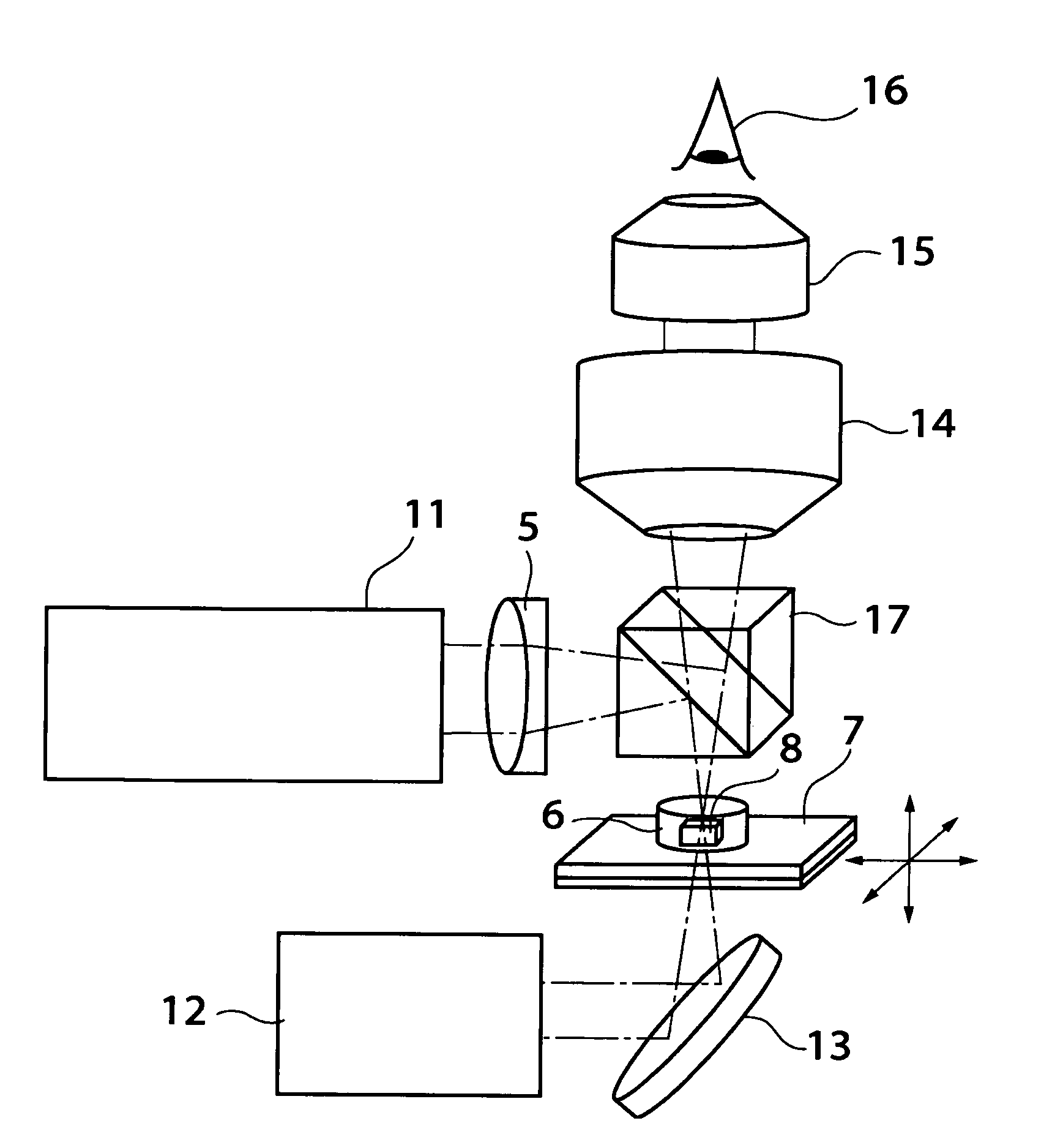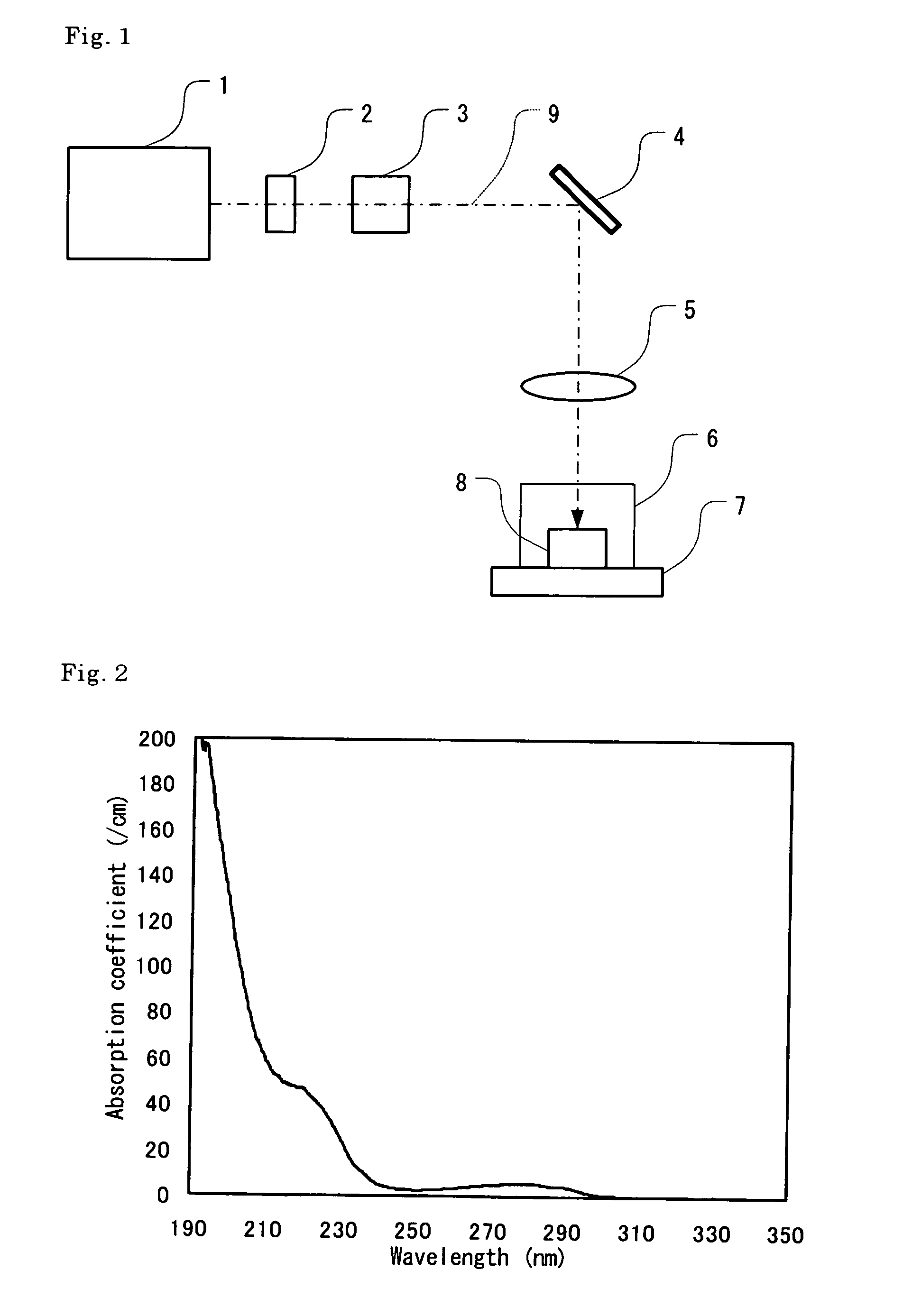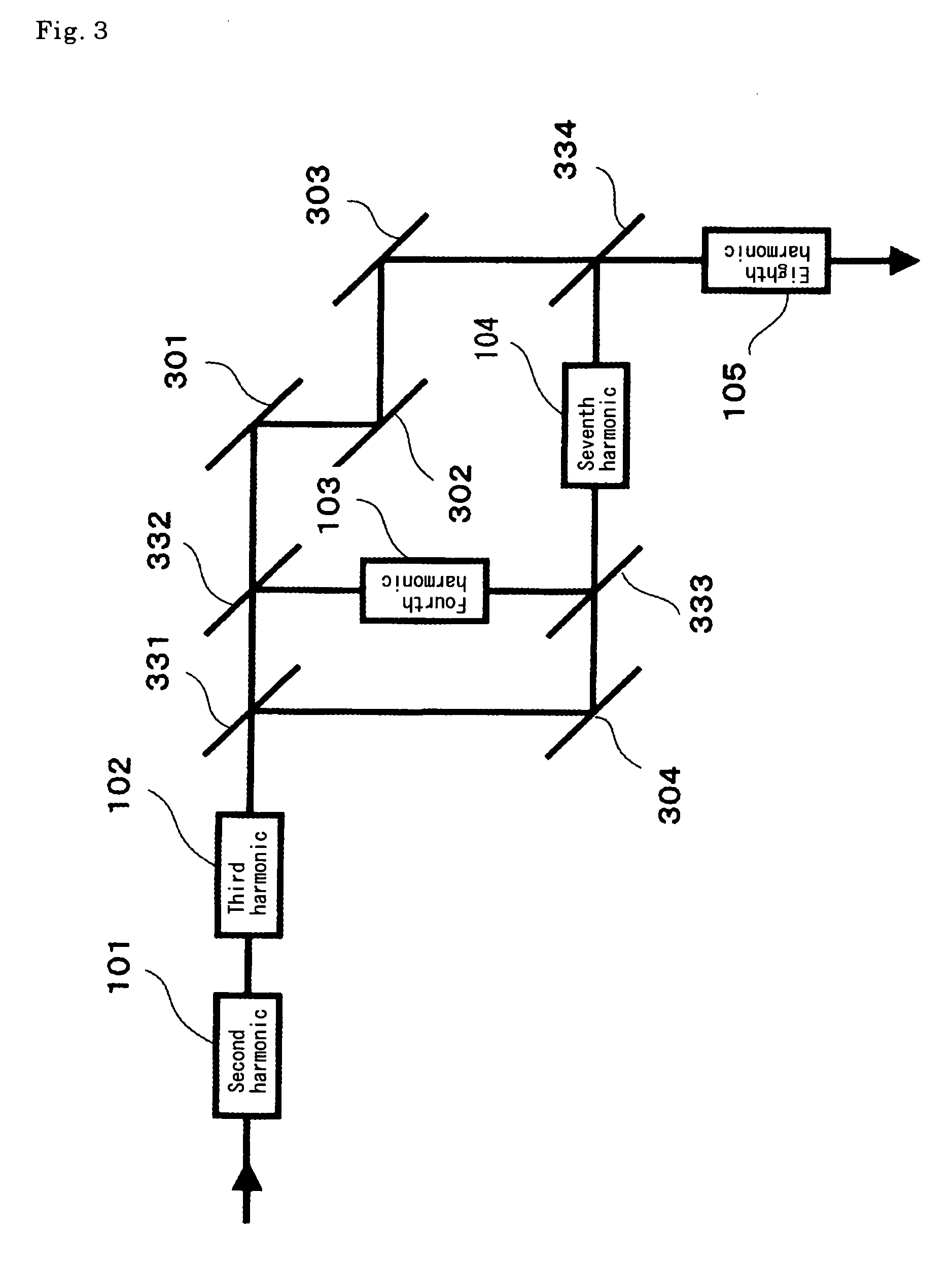Processing method of polymer crystal, processing system of polymer crystal, and observation system of polymer crystal
a processing system and polymer crystal technology, applied in the field of macromolecular crystal working methods, can solve the problems of inconvenient laser working by continuous light, infrared laser and visible light laser,
- Summary
- Abstract
- Description
- Claims
- Application Information
AI Technical Summary
Benefits of technology
Problems solved by technology
Method used
Image
Examples
embodiment 1
[0122]In order to investigate the basic characteristics of the working method of the present invention, a protein single crystal was irradiated with ultraviolet short-pulse laser light having a wavelength of 193 nm using an apparatus of the type shown in FIG. 1; as a result, the crystal was cut in two. The X-ray diffraction pattern of the crystal following cutting was measured, and a structural analysis was performed.
[0123]A hen-egg white lysozyme protein was selected as the model macromolecule, and a single crystal of this protein was grown in a sample container by the vapor diffusion method. The crystal growth solution used was as follows: namely, a 25 mg / ml solution of the hen-egg white lysozyme sample (re-purified 6 times) was prepared, and this was mixed at a 1:1 ratio with a solution adjusted so that sodium chloride was present at a concentration of 60 mg / ml in a 0.1 M acetic acid buffer solution adjusted to a PH of 4.5; 10 μl of the resulting solution was used. 400 μl of a so...
embodiment 2
[0132]Hole boring working was performed using the same apparatus as that described in Embodiment 1, so that a rectangular cavity was formed in the central portion of the crystal. The hen-egg white lysozyme was selected as the model macromolecule, and a single crystal of this protein constituting the object of working was grown in a sample container using the same growth method and growth conditions as in Embodiment 1. Subsequently, the protein solution in which the crystal was present was removed in the same manner as in Embodiment 1, and the sample container 6 was tightly sealed in a state in which liquid droplets of the external solution were left. A photograph of the crystal prior to laser light irradiation is shown in FIG. 12. The size of the crystal was 0.4 mm×0.6 mm×0.3 mm. The sample container 6 was placed on a stage 7 capable of triaxial movement along the X, Y and Z axes, and the sample was irradiated with ultraviolet short-pulse laser light having a wavelength of 193 nm fr...
embodiment 3
[0136]Using the same apparatus as that used in Embodiment 1, cutting working was performed by irradiating a protein polycrystal with ultraviolet short-pulse laser light having a wavelength of 193 nm, so that a single crystal portion was separated from the polycrystal.
[0137]The growth conditions of the hen-egg white lysozyme polycrystal constituting the material being worked were also the same as in Embodiment 1 and Embodiment 2. FIG. 13(a) shows a photograph of the crystal prior to irradiation with ultraviolet short-pulse laser light. The macromolecular crystal 8 was not an ideal single crystal, but had the form of a polycrystal in which two single crystals (a single crystal appearing as a dark crystal in the center, and a long slender hexagonal crystal appearing to overlap on the right side of the first crystal) were conjoined.
[0138]The spot position on the crystal was varied by causing the stage 7 to perform a linear reciprocating operation at a movement speed of 0.5 mm / sec and a ...
PUM
| Property | Measurement | Unit |
|---|---|---|
| wavelength | aaaaa | aaaaa |
| wavelength | aaaaa | aaaaa |
| wavelength | aaaaa | aaaaa |
Abstract
Description
Claims
Application Information
 Login to View More
Login to View More - R&D
- Intellectual Property
- Life Sciences
- Materials
- Tech Scout
- Unparalleled Data Quality
- Higher Quality Content
- 60% Fewer Hallucinations
Browse by: Latest US Patents, China's latest patents, Technical Efficacy Thesaurus, Application Domain, Technology Topic, Popular Technical Reports.
© 2025 PatSnap. All rights reserved.Legal|Privacy policy|Modern Slavery Act Transparency Statement|Sitemap|About US| Contact US: help@patsnap.com



